 Harriet Washington discusses the history of the Tuskegee Syphilis Study in her book, Medical Apartheid. Harriet Washington discusses the history of the Tuskegee Syphilis Study in her book, Medical Apartheid.
Tags: biology, bodies, health/medicine, inequality, prejudice/discrimination, race/ethnicity, science/technology, violence, informed consent, institutionalized discrimination, eugenics, medical ethics, scientific racism, slavery, tuskegee syphilis experiment, 21 to 60 mins
Year: 2013 Length: 28:27 Access: YouTube Summary: This short interview on Democracy Now with author and scholar Harriet A. Washington provides useful entrée into a discussion about racial discrimination within the medical establishment. Drawing on work from her book Medical Apartheid: the Dark History of Medical Experimentation on Black Americans from Colonial times to the Present, Washington shines a light on many of the systematic abuses African Americans and other People of Color have endured at the hands of scientists and medical professionals. • As Washington explains, the story of medical apartheid begins with scientific racism, the origins of which are often traced to 1779, when German scientist Johan Friedrich Blumenbach is credited with attempting to establish a race-based system of classification among humans (find more on Blumenbach's efforts here, and click on this link for information about how the scientific effort to find a biological basis for race continues into the present). Much has been written about how the legitimacy and authority of science allowed white slaveholders to justify the torture and confinement of their Black slaves; however, as Washington notes, there is a lesser known history of white medical professionals using Blacks as subjects in medical experiments. • In the above clip, Washington discusses The Tuskegee Study of Untreated Syphilis in the Negro Male, as one of the most notorious examples of Blacks being used as subjects in medical experiments. The study was conducted between 1932 and 1972 in Macon County, Alabama, and it tracked 399 poor and mostly illiterate Black sharecroppers who were diagnosed with syphilis. The study subjects were deceived by medical professionals into believing that they were being treated for “bad blood," when in fact the documented intentions of those leading the study was to allow the disease to run its course, which often meant a very painful death. By 1947 penicilin was recognized as a cure for syphilis, but study clinicians denied the antibiotic to subjects and instead gave them a placebo. • As Washington notes, the racism that made something like the Tuskegee Syphilis Study possible was systemic and could be located at all levels of the medical establishment. Seated at the top of the medical hierarchy was the U.S. Surgeon General, Thomas Parran, Jr. Even when presented with the penicillian cure, Parran opted to continue experimentation with the Black men of Macon County. By his assessment, their lives were less valuable than knowledge about syphilis. • For images related to the Tuskegee Syphilis Study, check out our Pinterest board titled "Race: Health/Health Care." Submitted By: Lester Andrist
8 Comments
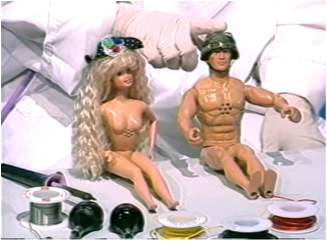 An early example of culture jamming using new media strategies. An early example of culture jamming using new media strategies.
Tags: art/music, consumption/consumerism, gender, marketing/brands, media, science/technology, social mvmts/social change/resistance, activism, culture jamming, new media art, gender socialization, 21 to 60 mins
Year: 1993 Length: 28:29 Access: YouTube Summary: How does social change happen? For more than a century, this question has inspired much sociological research. Within the study of social change, sociologists have often focused their attention on social movement activism and various forms of contentious politics. More recently, some sociologists have sought to move beyond these parameters to ask what other things might “count” as activism. For example, Notre Dame’s Center for the Study of Social Movements Mobilizing Ideas blog recently featured a two-part series entitled “New Ways to Define Activism” (Part I and Part II). Often, sociologists cite new digital media environments and technologies as timely reasons for why we must revisit “old” definitions of activism. While this question might be relevant in the contemporary context, this video illustrates how activists began to strategically draw upon digital media technologies more than twenty years ago. In 1993, a group of artist-activists launched a multi-faceted media campaign call the Barbie Liberation Organization (BLO) in reaction to Mattel’s new talking Barbie, which contained an electronic voice box that played stereotypical phrases such as “Math class is tough” (listen to talking Barbie). The campaign mixed traditional and electronic media, hardware hacking, and “boots on the ground” activism, resulting in this video, which sought to raise awareness of gender stereotypes in a normally difficult-to-reach population of Americans. This video would become one of the earliest and most influential demonstrations of electronic media culture jamming. Instructors can use this video to elicit discussion of successful culture jamming in several ways. First, the video is presented as a legitimate news report, which begs larger questions about the trust we place in news media or the authority of corporations in general. Second, the purported newscast is peppered with clips from actual investigative news reports, such as A Current Affair, to further enhance the legitimacy of BLO’s report. However, many of the clips are taken out of context and edited to subvert the original message, such as when one toy expert’s words are used to accuse Mattel of "terrorism against children” when she was instead accusing BLO of such tactics. Here, we see the artist-activists employing the very medium they challenge to contradict the intended message, which is the crux of culture jamming practice. Finally, the video serves as a DIY tutorial—no different than the myriad of how-to videos populating the web today—which instructs viewers how to perform the voice box swap at home, thus giving consumers and activists alike agency to subvert the toy’s intended message. For a culture jamming video assignment, also posted on The Sociological Cinema, click here. Submitted By: Josh Gumiela and Valerie Chepp  The intersection of teen identity, consumption, and social media. The intersection of teen identity, consumption, and social media.
Tags: children/youth, consumption/consumerism, corporations, marketing/brands, media, science/technology, identity, internet, social media, teenagers, youth culture, subtitles/CC, 21 to 60 mins
Year: 2014 Length: 53:41 Access: PBS Summary: This 2014 PBS Frontline documentary, Generation Like, serves as a nice updated follow-up to the popular 2001 documentary, The Merchants of Cool. As in the 2001 episode, Generation Like explores how large corporations and marketing firms seek to tap into young consumer markets. However, unlike the teens that came of age during the making of The Merchants of Cool, today’s young adults are navigating a radically different media and advertising environment, namely, one dominated by social media. As explained in this plot summary, “Thanks to social media, today's teens are able to directly interact with their culture - artists, celebrities, movies, brands, and even one another - in ways never before possible. But is that real empowerment? Or do marketers still hold the upper hand? In Generation Like, author and FRONTLINE correspondent Douglas Rushkoff (The Merchants of Cool, The Persuaders) explores how the perennial teen quest for identity and connection has migrated to social media - and exposes the game of cat-and-mouse that corporations are playing with these young consumers. Do kids think they're being used? Do they care? Or does the perceived chance to be the next big star make it all worth it? The film is a powerful examination of the evolving and complicated relationship between teens and the companies that are increasingly working to target them.” While this documentary would be useful for teaching ideas related to teen consumption and corporate advertising, it could also serve as a useful way to examine characteristics of the generational cohort following the Millennials, who have been dubbed "Generation Z." Submitted By: Valerie Chepp  Sasheer Zamata wonders why there aren't any Black emojis. Sasheer Zamata wonders why there aren't any Black emojis.
Tags: discourse/language, inequality, media, prejudice/discrimination, race/ethnicity, science/technology, representation, subtitles/CC, 00 to 05 mins
Year: 2014 Length: 2:27 Access: Hulu Summary: Given the current media spotlight on racist patterns of violence, it's easy to lose sight of more subtle forms of racism. For instance, a daily barrage of media featuring white protagonists simply becomes an unremarked upon backdrop of everyday life, like the piped elevator music that cajoles one into humming along despite being ambivalent about the tune. One racist backdrop might be the book covers one encounters at a typical bookstore. For instance, one analyst found that in 2011 a white person was featured on roughly 90% of all young adult book covers, whereas a Person of Color could only be found on somewhere between 10% and 15% of covers. The quiet tendency to whitewash media is but one reason why representations of whiteness have come to dominate the media landscape. Black and brown characters in popular books are routinely rewritten as white characters in Hollywood film adaptations. And speaking of film and television, one 2013 study found that while whites comprised 63% of the population, they were featured on the evening cable news shows 79% of the time. • The point is not to simply draw attention to the disproportionate number of roles being written for white men and women, or the fact that whites are being given more of a voice in popular media. Instead, my aim is to simply point out that visual media, such as advertising, television, and film, play a key role in promoting the idea of whiteness as the default or universal human. More pointedly, such visual media reinforce the idea that People of Color are deviations, somehow not fully compatible with the human ideal. • Consider the phrasing, "normal to dark skin," recently spotted on a bottle of Dove body lotion. It escapes most people's attention that "normal" is being used as a synonym for "white." Whiteness is the default. In the above comedy sketch from Saturday Night Live, Sasheer Zamata points out a second example of how whiteness becomes normalized in the selection of emojis used in texting. Not one of the more than 800 emojis depicts a Black person, and as Zamata notes, "Unicode, the company that creates emojis, thought that instead of one black person we needed two different kinds of dragons, nine different cat faces, three generations of a white family. And all the hands are white, too. Even the Black power fist is white!" Submitted by: Lester Andrist 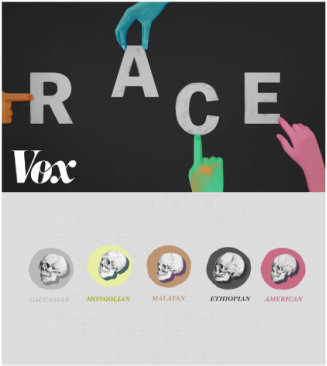 Vox debunks the race myth in a new video Vox debunks the race myth in a new video
Tags: biology, immigration/citizenship, inequality, knowledge, prejudice/discrimination, race/ethnicity, science/technology, social construction, caucasian, mexican, racial formations, scientific racism, subtitles/CC, 00 to 05 mins
Year: 2015 Length: 3:08 Access: YouTube; Vox Summary: It often surprises students to learn that sociologists and other social scientists regard race as little more than a creation of the collective imagination, or as the above video from Vox argues, race isn't real. Contrary to popular belief, racial categories do not consistently correspond to biological observations; nor are the racial categories used today a particularly ancient means of categorizing human societies. They are, in fact, both flimsy and recent. • The social theorist David Theo Goldberg argues that starting in the sixteenth century racial thinking and racist articulation became increasingly common in European societites. As Vox explains in the above video, one crucial moment of racist articulation appears to have occurred nearly two centuries later when in 1779 German scientist Johan Friedrich Blumenbach is credited with attempting to establish a scientific, race-based system of classification. Although his work has long been discredited, it is worth noting that he arrived at five hierarchically organized racial categories: "Caucasian, the white race; Mongolian, the yellow race; Malayan, the brown race, Ethiopian, the black race, and American, the red race." Not surprisingly, he ranked Caucasians highest on his racial hierarchy. • For those who remain unimpressed by the fact that racial thinking is a relatively recent phenomenon in human history, consider the fact that racial categories and their hierarchical arrangement have been shown to change with political priorities. In academic parlance, racial formations have continued to be created, transformed, and destroyed. For instance, the video explains that the U.S. Census categorized people with Mexican ancestry as white until 1930, at which point the Census began categorizing these whites as an emergent racial category known simply as "Mexican." The change in Census categories reflected a developing racial discourse in the American Southwest but it also played a role in temporarily limiting immigration from Mexico, and fewer immigrants from Mexico meant higher wages for whites. • Properly contextualized, the reason for the emergence of racial thinking in Western Europe seems fairly clear. Although it is assumed race is based on natural, biological differences, the truth is that racial thinking has had very little to do with accurately describing natural variation in human populations and far more to do with whites maintaining power, privilege, and resources at the expense of nonwhites. Although race isn't real in a biological sense, as the video explains, it has become hugely important in a social sense. The racial categories to which we're assigned can determine real life experiences. Submitted By: Lester Andrist 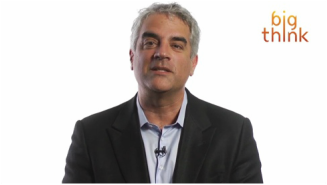 Sociologist Nicholas Christakis discusses structure, agency, and the concept of emergence Sociologist Nicholas Christakis discusses structure, agency, and the concept of emergence Tags: durkheim, emotion/desire, methodology/statistics, organizations/occupations/work, science/technology, theory, adam smith, agency, artificial social network, centrality, collective identity theory, emergence, georg simmel, human capital, methodological holism, methodological individualism, natural social network, nicholas christakis, obesity, social capital, social network analysis, structure, suicide, transitivity, subtitles/CC, 21 to 60 mins Year: 2011 Length: 56:35 Access: YouTube Summary: In this nice introductory lecture to the discipline of sociology, physician and sociologist Nicholas Christakis explodes the popular myth that people are masters of their own destiny. As the YouTube blurb states, "If you think you're in complete control of your destiny or even your own actions, you're wrong. Every choice you make, every behavior you exhibit, and even every desire you have finds its roots in the social universe." 1. This insight is an expression of a fundamental tension explored in the discipline—that between the power of individual agents (i.e., agency) and the power of supra-individual forces (i.e., structure), such as the neighborhood in which one lives or one's location within a social network. 2. The second big idea Christakis explores in his lecture is emergence, or that society is something more than simply the sum of its individuals and that collective phenomena are not mere aggregations of individual phenomenon. To illustrate the concept of emergence, Christakis embarks on a discussion of social networks and other central concepts to the discipline, such as social capital. He then concludes his lecture by pointing out that while many scientific disciplines have broken up phenomenon into smaller and smaller bits, and are now engaged in an effort to put the pieces back together in order to discern how their assembly gives rise to new, emergent properties, this pattern of disassembly and reassembly has always been a central feature of sociological work. Submitted By: Lester Andrist 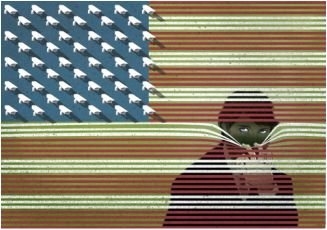 Image by Will Varner Image by Will Varner Tags: corporations, crime/law/deviance, foucault, goffman, government/the state, science/technology, theory, back stage, edward snowden, glenn greenwald, mass surveillance, n.s.a., panopticon, surveillance state, 00 to 05 mins, 11 to 20 mins, 21 to 60 mins Year: clip 1: 2013 | clip 2: 2014 Length: clip 1: 20:41 | clip 2: 5:38 Access: YouTube: clip 1: TED Talks clip 2: New York Times Summary: Taken together, the above two clips make three distinct points about why we should all take the unfolding revelations about N.S.A. surveillance very seriously, and the clips can be used to kick off a sociologically-informed discussion about the surveillance state and it's practice of mass surveillance. 1) In the first clip, journalist Glenn Greenwald delivers a TED Talk where he argues against the claim that only criminals have something to hide. People should take the N.S.A. revelations seriously because everyone has something to hide, even those of us who believe ourselves to be innocent of all crimes. After all, people routinely lock their bathroom doors and use passwords to access their email. To borrow a page from sociologist Erving Goffman, people all have a back stage. 2) In the second clip, journalist David Sirota argues we should take state surveillance seriously because the fact is, we are all criminals. That is, there are so many statutes on the books that virtually anyone could be found guilty of a crime. Chances are that even those who loudly profess they have nothing to hide have unknowingly committed crimes, and as the amount of data being collected and saved increases, the state stores aways more and more opportunities to charge any given citizen of a crime should it prove politically expedient to do so. 3) Finally, Greenwald alludes to a long standing observation in sociology that surveillance changes people; it controls them, even if charges of a crime never materialize and no formal interaction with the criminal justice system occurs. People drastically, if unknowingly, alter their behavior when they suspect they are being watched. No where is this reality more vividly illustrated than in what philosopher Jeremy Bentham described as a panopticon, a prison tower that offers a vantage point from which a guard can see all prisoners in their cells, but does not offer any single prisoner the ability to know whether he or she is being observed. Bentham imagined it as a means of controlling prisoners, but subsequent thinkers—namely Michel Foucault—have used the idea of a panopticon as a metaphor to describe the distinct way in which modern states exercise power and control. The prison tower is now the speed camera inconspicuously perched atop a traffic light; it's also the tablet that tracks it's user's browsing history. This architecture, which claims to exist for the purpose of reducing criminal behavior, is already also changing non-criminal behavior as well. Consider the journalistic practice of offering sources anonymity. As the surveillance state becomes ever more bold, the ability to promise such anonymity slips away, and some would argue, so too does an important check on government power (Note: The Sociological Cinema has explored the topic of the surveillance state here, here, and here, and we maintain a Pinterest board on the topic). Submitted By: Lester Andrist  Political agendas enter into scientific discourse. Political agendas enter into scientific discourse. Tags: corporations, environment, government/the state, politics/election/voting, science/technology, campaign financing, climate change, global warming, house of representatives, political bias, 06 to 10 mins Year: 2014 Length: 10:25 Access: The Daily Show Summary: This segment from The Daily Show spotlights a recent hearing of the U.S. House Committee on Science, Space, and Technology, in which President Obama's plan to decrease carbon emissions by 30% by 2030 was discussed. The video would be useful for explaining political bias, the relationship between wealth and power, and the power of corporations in elections. The clip includes footage from the hearing, in which several politicians interrogate Presidential Science Advisor John Holdren about whether climate change is a reality, despite the fact that, by now, the scientific literature has overwhelmingly shown that climate change is a massive global threat for humanity. In this video, U.S. Representatives Steve Stockman (R-Texas) and Larry Bucshon (Indiana-R) refute global warming, despite their inability to provide viable evidence. Indeed, Congressman Bucshon argues that people should trust public comments rather than scientific literature because, in his opinion, “The climatologists...depend on the climate changing to keep themselves publishing articles." He concludes that, "I could read that, but I don’t believe it.” At the end of the clip, Jon Stewart points to Stockman's interest in denying climate change, revealing that his three major campaign donors are big energy companies. This video would work well in combination with another clip on The Sociological Cinema, which illustrates how, despite overwhelming scientific evidence, powerful interests are able to suppress knowledge by introducing doubt into public discourse. Submitted By: Nihal Çelik  In Both, Rebeca learns the truth about a childhood surgery. In Both, Rebeca learns the truth about a childhood surgery. Tags: biology, bodies, gender, lgbtq, science/technology, sex/sexuality, bisexuality, intersex, sexual expression, sexual identity, sexual orientation, 61+ mins Year: 2005 Length: 86:20 Access: Vimeo Summary: [Trigger warning for those who might be traumatized by depictions of the sex reassignment surgery many intersex people experience as children] People often want to know how many people are born intersex? Unless one is specific about the many physical features that often get named "intersex," the question is difficult to answer. For instance, based on research from Blackless et. al. (and reported here), in the medicalizing language of late onset adrenal hyperplasia, 1 in 66 people are intersex; however, only 1 in about 150,000 are intersex if you restrict the label to include only those who have what medical doctors refer to as complete gonadal dysgenesis. The frequency of people receiving surgery to "normalize" the appearance of their genitals is about 1 or 2 people in 1,000. Frequencies are perhaps an interesting place to start a discussion on intersex, but in themselves, numbers do little to give voice to those who are born intersex within a culture and society that upholds a strictly dimorphic understanding of sex. The above film, Both, is a compelling drama, based on the experiences of many intersex adults, and the film tells a story of an issue that has been widely silenced through shame and secrecy. In the film, Rebeca Duarte, played by Jackie Parker, works as a stunt double for indie action films in San Francisco. From rolling out of cars to setting herself on fire, she puts her life at risk on a daily basis. Work, lovers and friends take up most of her time, but deep inside, she feels something is missing. Rebeca feels strangely disconnected from her own body and can’t figure out why. One day she mysteriously receives a photo album from someone in Peru, where she had spent her childhood. The album contains pictures of her parents and her brother who had supposedly died, but no images of herself. Feeling unsettled, Rebeca sets out to discover the mystery and unravel the web of lies that both the doctors and her parents have spun her whole life. Through her fight to uncover the truth, Rebeca discovers her own identity and a renewed passion for life. Both works by posing compelling questions about gender and sexuality through the experiences of its intersex protagonist. For those considering showing the film in class, note that nudity, masturbation, and sexual intercourse are depicted at 17:50 mins, 21:30 mins, and 53:20 mins. Submitted By: Leslie Jaye 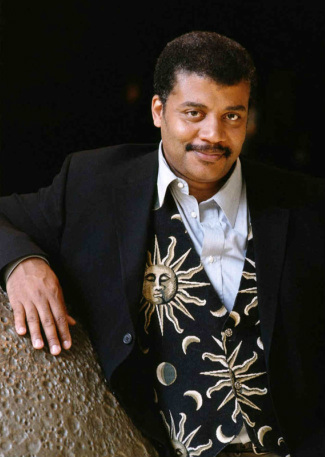 Neil deGrasse Tyson discusses the greatest obstacle he faced. Neil deGrasse Tyson discusses the greatest obstacle he faced. Tags: culture, discourse/language, knowledge, media, prejudice/discrimination, race/ethnicity, science/technology, politics of representation, symbolic representation, stereotypes, 11 to 20 mins Year: 2013 Length: 13:04 Access: YouTube Summary: In this insightful gem of a clip, Thomas Cech, president of the Howard Hughes Medical Institute, interviews world-renowned astrophysicist Neil deGrasse Tyson and asks him to recount the greatest obstacle he has faced while pursuing his career. Tyson begins by mentioning that while his parents were generally supportive of his ambitions, he couldn't necessarily count on the same enthusiasm and support from his peers, who were concerned that he apply his impressive intellect toward a profession that would allow him to advance the cause of the African American community. Specifically, Tyson recounts the story of a black Rhodes scholar in economics, who upon hearing that Tyson's chosen major was physics, replied, "The black community cannot afford the luxury of someone with your intellect to spend it on that subject." Tyson carried this nagging judgement around with him, and then while a graduate student at Columbia University, he was interviewed on air by the local news station regarding a recent explosion on the surface of the sun. Tyson explains in this clip that as he watched himself on television that evening, he realized it was the first time he had ever seen an interview with a black person that had nothing to do with being black. The clip works well as a foray into a broader discussion about what Stuart Hall calls the politics of representation, which draws attention to fact that how one imagines a people to exist in the world—how they are represented in discourse—holds consequences for the power and resources those people are able to control and wield. Neil deGrasse Tyson's story underscores Hall's thinking on the issue. Namely, "events, relations, structures do have conditions of existence and real effects, outside the sphere of the discursive; but that it is only within the discursive...[that] they can be constructed with meaning...how things are represented and the 'machineries' and regimes of representation in a culture do play a constitutive, and not merely a reflexive, after-the-event, role" (444). Thus, Tyson's answer to the Rhode's scholar is that his visible position as a black astrophysicist constitutes an important intervention in the discourse that attempts to construct black men as unqualified for the role of scientific expert. Submitted By: Lester Andrist |
Tags
All
.
Got any videos?
Are you finding useful videos for your classes? Do you have good videos you use in your own classes? Please consider submitting your videos here and helping us build our database!
|
 RSS Feed
RSS Feed
